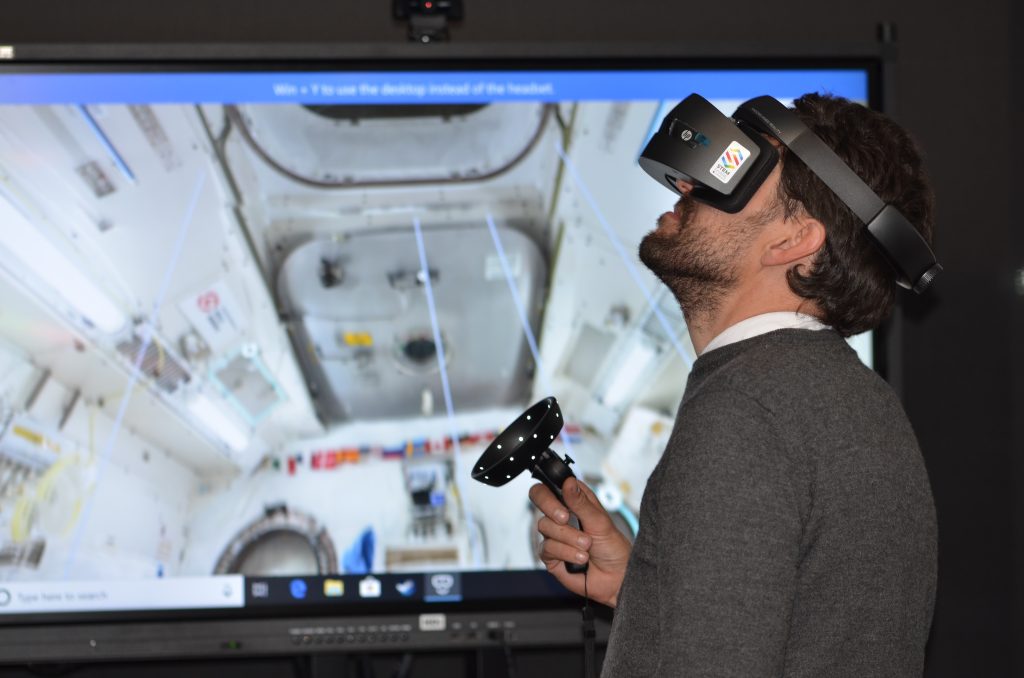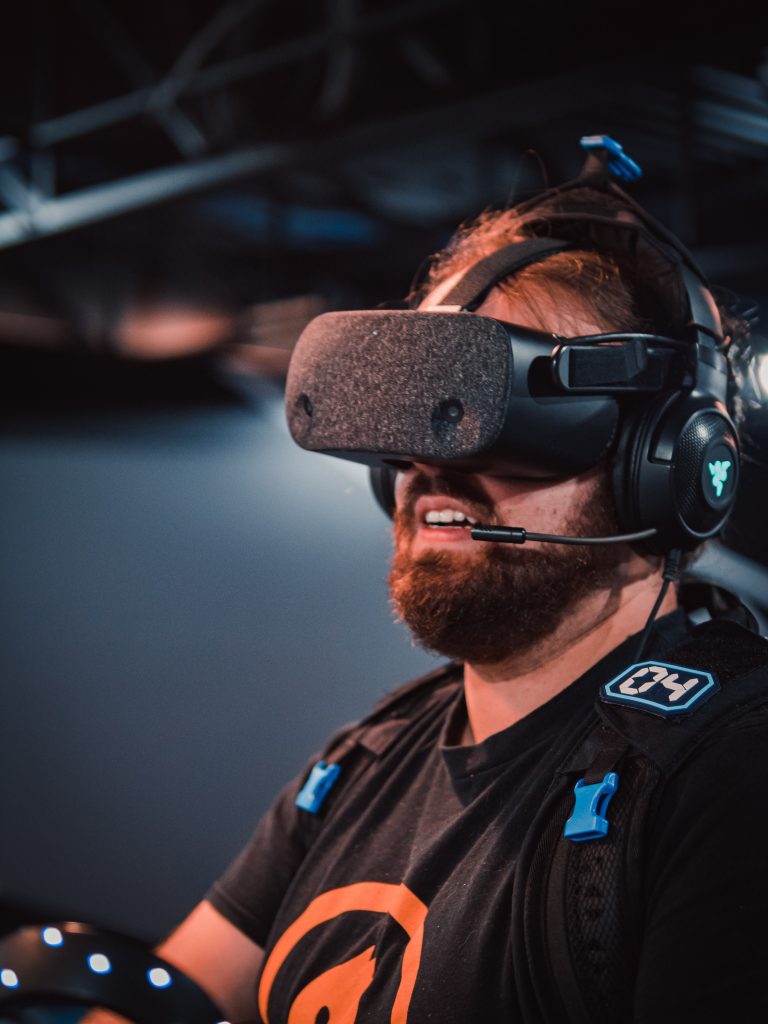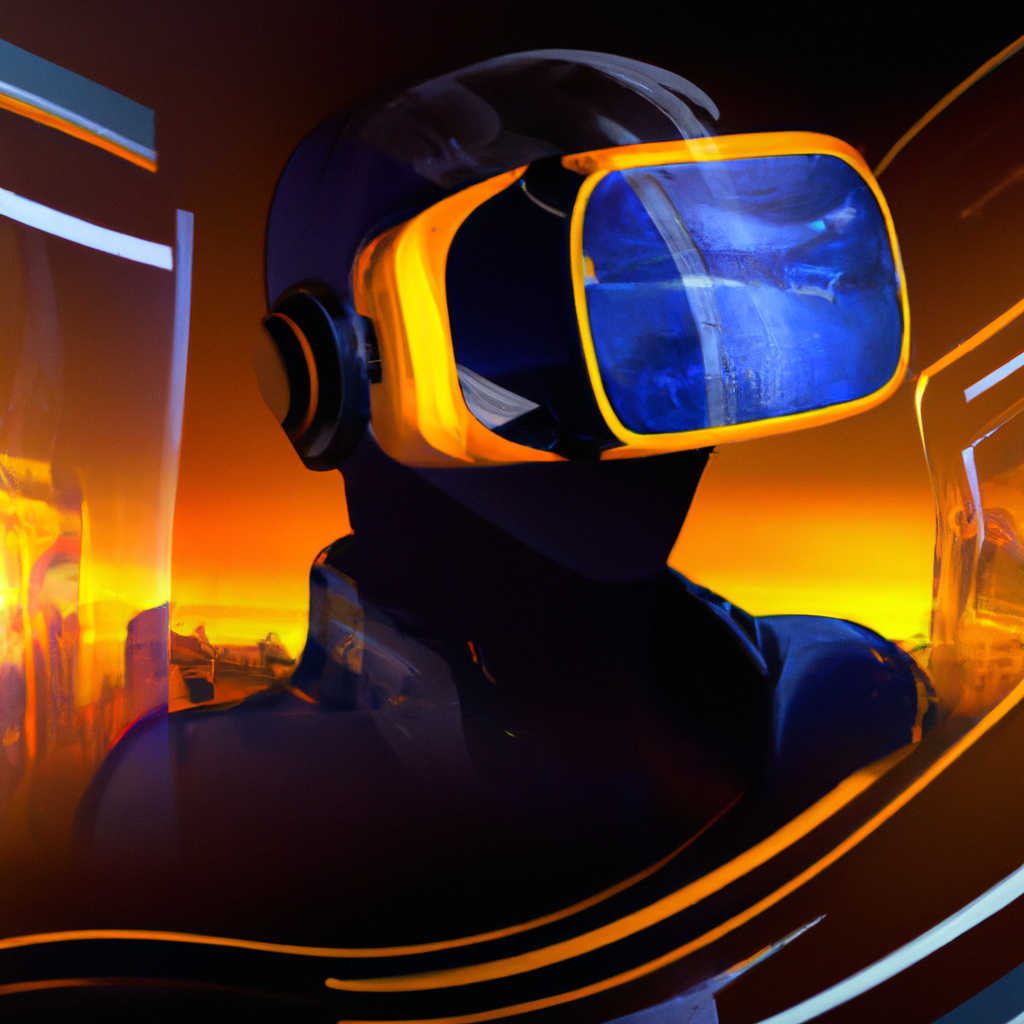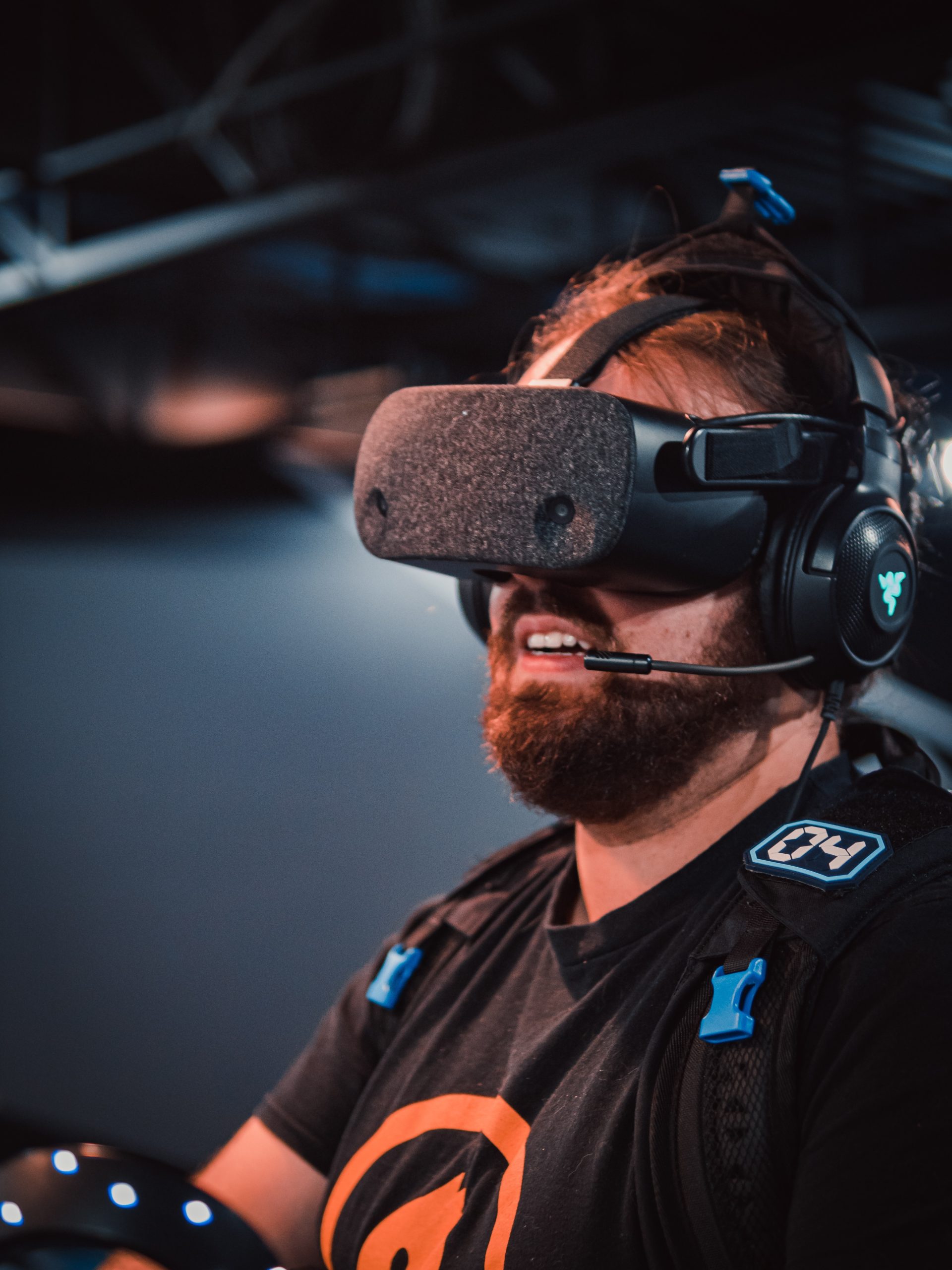In the ever-evolving world of technology, two buzzwords have emerged as the frontrunners of the immersive experience: Augmented Reality (AR) and Virtual Reality (VR). Augmented Reality seamlessly blends the virtual with the real, enhancing our surroundings with digital elements, while Virtual Reality transports us to an entirely different world, immersing us in a simulated environment. As these two technologies continue to captivate our imagination, it begs the question: which will shape the future of immersive tech? Let’s dive into the world of AR and VR to uncover their limitless potential and their impact on various industries.
Benefits of Augmented Reality
Augmented Reality (AR) offers a plethora of benefits that have the potential to revolutionize various industries. One significant advantage of AR is the ability to enhance the overall user experience by overlaying digital information on top of the physical world. This means that users can have a more interactive and engaging experience while still being fully present in their surroundings. By seamlessly integrating digital content into the real world, Augmented Reality provides a unique and dynamic way of interacting with our environment.
Another key benefit of AR is its potential to improve productivity and efficiency in various fields. For example, in the healthcare industry, AR can be used to provide doctors with real-time information and visual cues during surgeries, allowing for more precise procedures. In manufacturing, AR can assist workers by providing them with step-by-step instructions layered onto their view of the physical workspace, reducing human error and increasing efficiency. This technology has the potential to revolutionize how we work and learn by providing us with valuable information at our fingertips.
Additionally, Augmented Reality offers opportunities for enhanced marketing and advertising. Companies can create immersive experiences through AR applications, allowing customers to virtually try on products or visualize how they would look in different settings. This not only provides a more engaging experience for the customers but also helps companies to showcase their products in a more interactive and compelling way. AR advertising has the potential to create a deeper connection between brands and consumers, ultimately leading to increased brand loyalty and sales.
Applications of Augmented Reality
The applications of Augmented Reality are vast and continue to expand across various industries. In education, AR can revolutionize the way students learn by providing interactive and immersive experiences. For instance, students can use AR apps to explore ancient ruins, interact with virtual animals, or visualize complex scientific concepts. This hands-on approach to learning not only makes education more engaging but also facilitates better understanding and retention of information.
In the field of architecture and design, AR can be used to visualize and modify 3D models of buildings in real-time. Architects and designers can overlay digital representations of their designs onto the actual environment, allowing them to see how the finished product will look and make necessary adjustments before construction begins. This saves time and resources by eliminating the need for physical prototypes and facilitates effective communication between architects, designers, and clients.
Furthermore, Augmented Reality has found applications in the entertainment and gaming industry. AR games like Pokémon Go have gained immense popularity by seamlessly merging virtual elements with the real world. Players can explore their surroundings and interact with virtual characters, creating a unique and immersive gaming experience. AR can also be used to enhance live events, concerts, and exhibitions by providing additional information or transforming spaces into interactive installations.

Challenges of Augmented Reality
While Augmented Reality offers numerous benefits, it also presents certain challenges that need to be addressed for its widespread adoption. One of the primary challenges is the development of robust and reliable AR hardware. Currently, most AR experiences require the use of smartphones or dedicated headsets, which can still be bulky and limited in their capabilities. Advancements in hardware technology, such as lightweight and high-resolution displays, are necessary to provide users with a seamless and comfortable AR experience.
Another significant challenge is the creation of high-quality and interactive AR content. Developing AR applications requires expertise in both software development and creative content creation. The process of creating realistic and engaging AR experiences can be time-consuming and costly. Additionally, ensuring compatibility across different devices and platforms presents a challenge for developers, as creating content that works seamlessly across a wide range of devices and operating systems is not always straightforward.
Furthermore, privacy concerns are a significant challenge in the realm of AR. As AR technology becomes more advanced, it has the potential to collect and store vast amounts of personal data, including location information and visual data. Ensuring the privacy and security of users’ data is crucial to building trust and encouraging widespread adoption of AR technology. Striking the right balance between personalized experiences and user privacy will be crucial in navigating this challenge.
Benefits of Virtual Reality
Virtual Reality (VR) offers an entirely different immersive experience, transporting users to a completely virtual environment. One of the significant benefits of VR is the ability to create highly realistic and immersive simulations. VR can provide users with experiences that are not possible in the physical world, such as exploring distant planets, diving into the depths of the ocean, or flying through space. This level of immersion can evoke powerful emotions and create memorable experiences.
Moreover, VR has the potential to revolutionize various industries, particularly in training and education. For example, in healthcare, VR simulations can help medical professionals practice complex procedures in a safe and controlled environment, without putting patients at risk. In aviation, pilots can undergo realistic flight training without the expense and logistical challenges of using actual aircraft. VR training allows for repetitive, high-fidelity practice, ultimately leading to improved skills and increased safety.
Another significant benefit of VR is its potential in therapy and rehabilitation. Virtual environments can provide a safe and controlled space for patients to practice real-life scenarios, such as overcoming phobias or re-learning motor skills after an injury. VR therapy has shown promising results in treating various mental health conditions, including anxiety disorders and phobias. The immersive nature of VR helps patients confront their fears in a controlled manner, leading to improved outcomes and greater patient engagement.

Applications of Virtual Reality
Virtual Reality has applications across a wide range of industries, with some of the most notable being gaming and entertainment. VR gaming provides an unprecedented level of immersion, allowing players to step into virtual worlds and interact with their surroundings. This creates a more engaging and realistic gaming experience, captivating players in ways that traditional gaming cannot. Additionally, VR can be used to enhance live events, concerts, and performances by providing virtual experiences that would otherwise be impossible.
In the field of architecture and design, VR is used to create virtual walkthroughs of buildings and spaces before they are constructed. This allows architects and clients to visualize the final product and make necessary changes or improvements before any physical work begins. VR also plays a crucial role in remote collaboration, as architects and designers can use virtual environments to work together on projects, regardless of their physical location.
Furthermore, VR has made significant advancements in the field of healthcare. Doctors can use VR simulations to practice complex surgeries or medical procedures, improving their skills and reducing the risk of errors during actual procedures. VR is also being used in pain management, with immersive experiences helping to distract patients from discomfort and reduce the need for medication. Additionally, virtual reality therapy is showing promise in treating conditions such as PTSD and chronic pain.
Challenges of Virtual Reality
Virtual Reality technology still faces several challenges that must be addressed for its widespread adoption. One of the significant challenges is the issue of motion sickness and discomfort that some users experience while using VR devices. The disconnect between the visual stimuli provided by the VR headset and the user’s physical movements can cause nausea and dizziness. Ongoing advancements in hardware and software solutions are necessary to overcome this challenge and provide a more comfortable and enjoyable VR experience.
Additionally, the cost of VR equipment is still relatively high, making it inaccessible to some individuals and organizations. High-quality VR headsets and accompanying hardware require a significant financial investment, limiting the widespread adoption of VR technology. As technology advances and becomes more affordable, this obstacle is gradually being overcome, opening up opportunities for more individuals and businesses to experience the benefits of VR.
Another challenge for VR is the potential social and ethical implications it may pose. The immersive nature of VR experiences raises questions about how people’s behavior and interactions may change in virtual environments. There are concerns about addiction, potential desensitization to violence, and the blurring of the line between reality and virtual reality. Addressing these concerns and establishing guidelines and ethical frameworks will be crucial to ensure the responsible and safe use of VR technology.

Comparison of Augmented Reality and Virtual Reality
Immersive Experience
Both Augmented Reality and Virtual Reality provide immersive experiences; however, they differ in the nature of immersion. AR augments the real world by overlaying digital information, enhancing the user’s perception of the physical environment. Virtual Reality, on the other hand, transports the user to a completely virtual environment, providing a fully immersive experience disconnected from the physical world.
User Interaction
AR allows for user interaction with both the digital elements and the physical environment. Users can touch, move, and manipulate virtual objects while still being aware of the real world. VR, on the other hand, primarily relies on hand controllers or other input devices for user interaction within the virtual environment. While some VR systems offer room-scale experiences, the interaction is limited to the virtual space.
Real-world Integration
AR seamlessly integrates digital information into the real world, allowing users to perceive both simultaneously. This real-world integration enables a range of practical applications, such as overlaying instructions on physical objects or visualizing data in real-time. VR, on the other hand, completely disconnects users from the real world, offering a fully virtual experience.
Hardware Requirements
AR experiences can be accessed through smartphones or dedicated AR headsets, making it more accessible to a wider audience. VR, on the other hand, generally requires dedicated headsets and often more powerful hardware to provide the necessary level of immersion. This higher hardware requirement can make VR experiences more costly and less accessible to some users.
Cost
AR experiences can be accessed through smartphones, which are already prevalent in society, making the cost of entry into AR relatively low. Dedicated AR headsets, while more expensive than smartphones, are becoming more affordable. VR headsets, on the other hand, can be more expensive, especially high-end ones that offer a more immersive experience. The overall cost of VR, including the required hardware, is currently higher than that of AR.
Content Creation
Creating realistic and interactive AR content requires expertise in both software development and creative content creation. Developing AR experiences involves overlaying digital elements onto the real-world environment, which can be challenging and time-consuming. VR content creation typically involves creating entirely virtual environments and scenarios and requires expertise in 3D modeling and animation. Both AR and VR content creation require specialized skills and can be resource-intensive.
Privacy Concerns
AR raises concerns about privacy as it has the potential to collect and store personal data, including location information and visual data. Ensuring the privacy and security of users’ data is crucial to building trust and encouraging widespread adoption of AR technology. VR, on the other hand, does not have the same privacy concerns as it primarily operates within a self-contained virtual environment.
Use Cases
AR has found applications across various industries, including education, healthcare, manufacturing, and marketing. It enhances the learning experience, improves productivity, and provides new opportunities for businesses to engage with customers. VR, on the other hand, is widely used in gaming, training, and therapy. It provides exceptional immersion, realistic simulations, and opportunities for safe and controlled practice.
Convergence of AR and VR
While AR and VR offer distinct experiences, there is a growing trend towards the convergence of these technologies. Mixed Reality (MR) combines elements of both AR and VR, creating experiences where digital content interacts with the real world in a seamless manner. MR allows for virtual objects to appear as if they are integrated into the user’s physical environment, enhancing the level of immersion and interactivity. This convergence of AR and VR technologies has the potential to open up new possibilities and applications that blend the best of both worlds.

Future Developments in Immersive Tech
The future of immersive technology, including both AR and VR, holds exciting possibilities. Advancements in hardware technology will continue to play a significant role in improving the user experience, making devices more lightweight, comfortable, and affordable. The development of compact and powerful processors, high-resolution displays, and accurate motion tracking will contribute to more immersive and realistic experiences.
Furthermore, advancements in artificial intelligence and machine learning will enhance the capabilities and interactivity of AR and VR systems. AI algorithms can be used to analyze and interpret real-time data, allowing for more intelligent and context-aware AR overlays. In VR, AI can create dynamic and responsive virtual worlds that adapt to the user’s actions and preferences, leading to more personalized and engaging experiences.
Additionally, the growing availability of 5G networks will have a significant impact on the future of immersive tech. 5G’s low latency and high bandwidth will enable real-time data streaming and processing, allowing for seamless and responsive AR and VR experiences. With faster and more reliable connectivity, users will be able to access immersive content on the go, further blurring the line between the physical and virtual worlds.
Conclusion
Augmented Reality and Virtual Reality are two technologies with immense potential to transform industries and create entirely new experiences. AR enhances the real world by overlaying digital information, providing unique opportunities for interactive learning, improved productivity, and enhanced marketing experiences. VR, on the other hand, transports users to virtual environments, offering highly immersive simulations for various applications, including gaming, training, and therapy.
While both technologies come with their own challenges, advancements in hardware, content creation, privacy protection, and user interaction are being made to address these obstacles. The convergence of AR and VR, along with future developments in immersive tech such as Mixed Reality, AI integration, and 5G connectivity, will undoubtedly shape the future of immersive experiences.
As AR and VR continue to evolve and become more accessible, the possibilities for their applications and benefits will only continue to expand. Whether it be in education, healthcare, entertainment, or other industries, the future of immersive tech is bright, and the potential for innovation and transformation is limitless.













